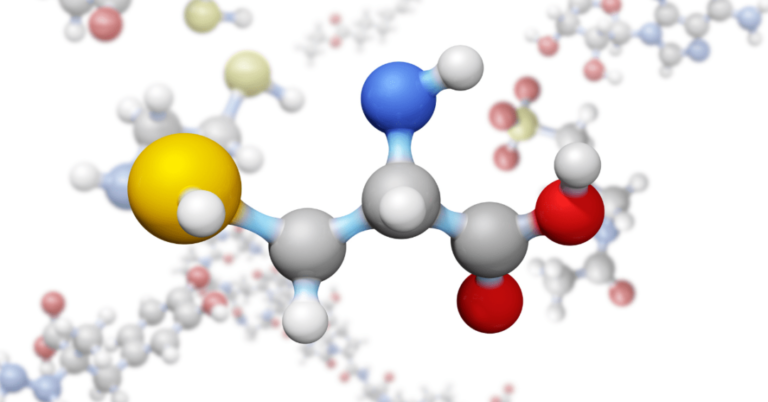Amino Acids vs Protein: The Building Blocks of Nutrition
Some links on this page are affiliate links (including Amazon Associate links) which means that, if you choose to make a purchase, we may earn a small commission at no extra cost to you. We greatly appreciate your support!

Amino Acids vs Protein: The Building Blocks of Nutrition
In the world of nutrition and fitness, the debate between amino acids and protein often arises. Both are essential for overall health and muscle development, but understanding the nuances between the two can help optimize your dietary choices and fitness goals. Let’s look at the differences, benefits, and roles of amino acids versus protein.
Protein and Amino Acid: Unraveling the Distinction

Amino acids and proteins are often used interchangeably, but they represent distinct components crucial for various bodily functions. Protein is comprised of amino acids, while amino acids are the building blocks of tissues, enzymes, hormones, and other vital molecules in the body. While protein provides the necessary amino acids for bodily functions, understanding the individual roles and benefits of amino acids versus protein is essential for achieving optimal health and performance.
Amino acids are organic compounds composed of carbon, hydrogen, oxygen, nitrogen, and sometimes sulfur. There are 20 amino acids, categorized into essential, non-essential, and conditional amino acids. Essential amino acids cannot be synthesized by the body and must be obtained through diet, while non-essential amino acids may be produced by the body. Conditional amino acids are usually non-essential but become essential under certain conditions, such as illness or stress.
Protein: The Complete Package
Protein is a macronutrient essential for building and repairing tissues, supporting immune function, and regulating various physiological processes. When you consume protein-rich foods, such as meat, fish, eggs, dairy, legumes, and nuts, your body breaks down the protein into its constituent amino acids during digestion. These amino acids are then absorbed into the bloodstream and transported to cells throughout the body to fulfill specific functions.
Amino Acid: The Building Blocks of Life

The difference between amino acids plays diverse roles in the body, beyond just protein synthesis. They are involved in neurotransmitter synthesis, immune function, energy production, and nutrient transport. Additionally, certain specific amino acids serve as precursors for important molecules like serotonin, dopamine, and nitric oxide, influencing mood, cognition, and cardiovascular health. The balance and availability of amino acids are crucial for maintaining overall health and well-being.
1. Essential Amino Acids: Indispensable for Health
Essential amino acids are critical for protein synthesis and various metabolic processes. Essential amino acids you need include histidine, isoleucine, leucine, lysine, methionine, phenylalanine, threonine, tryptophan, and valine. These amino acids must be obtained through diet, as the body cannot produce them in sufficient quantities. Consuming a variety of protein sources ensures adequate intake of essential amino acids, supporting muscle growth, tissue repair, and overall health.
2. Non-Essential Amino Acids: Versatility in Function
Nonessential amino acids, such as alanine, asparagine, aspartic acid, cysteine, glutamic acid, glutamine, glycine, proline, serine, and tyrosine, can be synthesized by the body from other amino acids or metabolic intermediates. While they are not essential in the diet, non-essential amino acids play vital roles in protein synthesis, neurotransmitter production, and cellular metabolism. Their availability influences various physiological processes and overall health.
3. Conditional Amino Acids: Responding to Demand
Conditional amino acids become essential during times of stress, illness, or metabolic dysfunction when the body’s demand exceeds its ability to produce them. Examples of conditional amino acids include arginine, cysteine, glutamine, glycine, ornithine, proline, serine, and tyrosine. Under such conditions, obtaining these amino acids through diet or supplementation may be necessary to support recovery, immune function, and overall health.
Amino Acids vs Protein Powder: Which is Superior?
The comparison between amino acids and proteins is not about superiority but rather about understanding their complementary roles in the body. Protein provides a complete spectrum of amino acids necessary for various physiological functions, while individual amino acids in the body serve as precursors for specific molecules and metabolic pathways. Both are essential for optimal health, and their adequate intake is vital for supporting muscle growth, tissue repair, and overall well-being.
Benefits of Amino Acid Supplements and Protein Powder
- Muscle Growth and Repair: Protein and amino acids are essential for building and repairing muscle mass, making them crucial for athletes, fitness enthusiasts, and individuals undergoing physical rehabilitation.
- Immune Function: Amino acids play a significant role in supporting immune function, helping the body defend against pathogens, and promoting faster recovery from illness and injury.
- Metabolic Health: Adequate intake of amino acids and protein is essential for maintaining metabolic health, including blood sugar regulation, lipid metabolism, and energy production.
- Cognitive Function: Certain amino acids, such as tryptophan and tyrosine, are precursors for neurotransmitters involved in mood regulation, cognitive function, and stress response.
- Heart Health: Protein and amino acid supplements contribute to heart health by supporting healthy blood pressure, cholesterol levels, and vascular function, reducing the risk of cardiovascular disease.
Click Here To See Our Top Amino Acid Supplements of 2025
Frequently Asked Questions

Is taking amino acids the same as protein?
No, taking amino acids is not the same as taking protein. While protein is comprised of amino acids, taking amino acid supplements provides isolated forms of these compounds, whereas protein supplementation offers a complete package of essential and non-essential amino acids along with additional nutrients.
Is it better to take amino acids or whey protein?
The answer depends on individual goals and needs. Whey protein provides a complete spectrum of amino acids along with additional nutrients, making it ideal for muscle building and recovery. Amino acid supplements may be useful for targeted benefits, such as enhancing athletic performance or mood regulation. Ultimately, the choice between amino acids and whey protein depends on specific health and fitness goals.
Should you take amino acids or protein after a workout?
After a workout, taking protein powders, particularly whey protein, is generally recommended for optimal muscle function. It provides a complete spectrum of amino acids needed, facilitating muscle repair and synthesis. While amino acid supplements can be beneficial for specific purposes, such as targeting muscle protein synthesis, whole protein sources are typically preferred after a workout for comprehensive nutritional support.
What is the difference between a complete protein and an amino acid?
A complete protein contains all the essential amino acids required by the body, whereas an amino acid is a single building block of protein.
Conclusion
In summary, amino acids and protein are integral components of a healthy diet and play diverse roles in supporting overall health and well-being. While protein intake provides the necessary amino acids for bodily functions, understanding the individual roles and benefits of amino acids instead of protein can help optimize dietary choices and achieve specific health and fitness goals. Whether you’re aiming to build muscle, support immune function, or enhance cognitive performance, prioritizing both amino acids and protein requirements in your diet is essential for unlocking your full potential.





